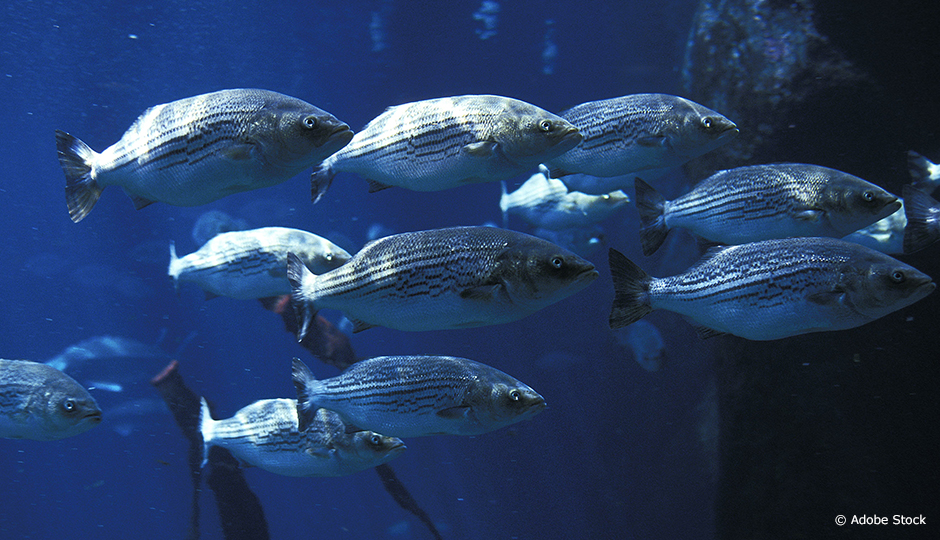Since 2018, fishermen have been able to fish for striped bass east of Forestville and Rimouski in the St. Lawrence River. This fishing area has been added to the one south of the Gaspé Peninsula, which was reopened in 2013.
The decision to once again allow recreational striped bass fishing—although with catch and size limits—is largely based on the chemical analysis of a bone located in the inner ear of the fish. This analysis was carried out by researchers at Ressources aquatiques Québec (RAQ), the only inter-institutional group in Québec that is working on the sustainable development of the province’s aquaculture and fisheries industry.
The striped bass disappeared from the St. Lawrence River in the 1960s.
The striped bass disappeared from the St. Lawrence River in the 1960s following the destruction of its habitats and poor fishing practices. In 2000, the Québec government banned its capture and, starting in 2002, released millions of striped bass larvae in the hopes of restoring the population.
By 2008, the fish were reproducing naturally. Their numbers were increasing, particularly in Gaspésie waters. But did these individuals come from the river repopulation effort, or from the native population of the Miramichi River in New Brunswick?
Using a mass spectrometry technique involving laser ablation, the team led by Pascal Sirois, holder of the Research Chair on Exploited Aquatic Species at the Université du Québec à Chicoutimi (UQAC) and a researcher with RAQ, analyzed the ear bones, known as “otoliths”, of several striped bass.
Otoliths absorb chemical elements from the bodies of water that the fish pass through. Like a tree trunk, otoliths also form growth rings that can be counted to determine the age of the fish. By comparing the chemical profiles at the heart of the otoliths—corresponding to the spawning of the fish—it was possible to determine that the individuals swimming in the Gaspé Peninsula came from New Brunswick.
This expertise, which is unique to Québec and Eastern Canada, has shown that many striped bass from New Brunswick migrate north, to the great delight of Québec fishermen, who can now catch them in Eastern Québec without harming the river bass, whose survival remains fragile.




